Variations
-

Minifigure – Norwegian volunteer soldier who served with the German military during World War II (LEGO Compatible)
$4.99 -
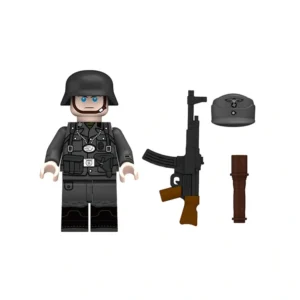
Minifigure – German soldier 11th SS Volunteer Panzergrenadier Division “Nordland” (LEGO Compatible)
$4.99 -
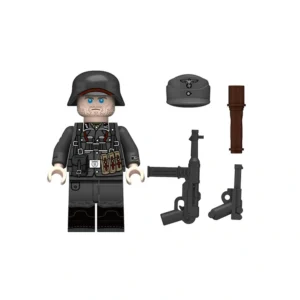
Minifigure – German forces 23rd SS Volunteer Panzergrenadier Division “Nederland” World War II (LEGO Compatible)
$4.99 -
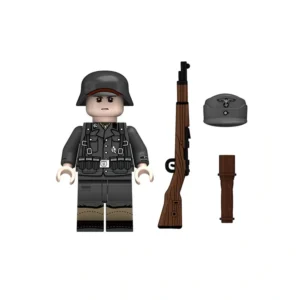
Minifigure – Estonian volunteer soldier who served with the German military 20th Waffen Grenadier Division of the SS (1st Estonian) during World War II (LEGO Alternative)
$4.99
Introduction
This image displays a set of four toy minifigures, representing soldiers from different foreign volunteer units of the German Waffen-SS during World War II. Each is identified by a label.
Here is a description of each figure:
Figure: Nederland
This image displays a toy minifigure representing a soldier of the 23rd SS Volunteer Panzergrenadier Division “Nederland”.
The figure is depicted in a German Waffen-SS M43 service uniform, consisting of a field grey (Feldgrau) tunic and trousers, a dark grey Stahlhelm (steel helmet), and combat Y-straps with a belt.
His specific affiliation is clearly identified by his insignia and the text:
- SS Collar Tabs: The tunic’s right collar tab features the double sig runes ($\mathfrak{SS}$), the standard insignia for the Waffen-SS.
- Dutch Sleeve Shield: On his left arm is a sleeve shield with the horizontal tricolor of the Netherlands (red, white, and blue), identifying him as a Dutch volunteer.
- Text: The text “N625 Nederland” confirms this representation.
The set also includes an accessory: a Luger P08 pistol.
Historical Background: The “Nederland” division was formed in 1943 from Dutch volunteers. Motivated primarily by anti-communism, it fought exclusively on the Eastern Front, most notably in the Battle of Narva (as part of III SS Panzer Corps) and later in the Courland Pocket, where it suffered heavy casualties.
Figure: Estonia
This image displays a toy minifigure representing a soldier of the 20th Waffen Grenadier Division of the SS (1st Estonian).
The figure is depicted in a German Waffen-SS M43 service uniform, consisting of a field grey (Feldgrau) tunic, a dark grey Stahlhelm (steel helmet), and combat Y-straps with a belt.
His specific affiliation is clearly identified by his insignia and the text:
- SS Collar Tabs: The tunic’s right collar tab clearly features the double sig runes ($\mathfrak{SS}$).
- Text: The text “N626 Estonia” at the bottom explicitly identifies the figure’s intended representation.
The set also includes an accessory: a Karabiner 98k (Kar98k) rifle, the standard-issue bolt-action rifle for German forces.
Historical Background: The 20th Waffen Grenadier Division of the SS (1st Estonian) was formed in 1944, primarily from Estonian men who volunteered or were conscripted to fight the Soviet Union, which had occupied their country. Many Estonians saw Germany as a way to fight for the restoration of their national independence. The division fought fiercely on the Eastern Front, most notably in the Battle of Narva (1944).
Figure: Norwegen
This image displays a toy minifigure representing a soldier of the SS-Freiwilligen-Legion Norwegen (Norwegian Legion).
The figure is depicted in a German Waffen-SS M43 service uniform, consisting of a field grey (Feldgrau) tunic, a dark grey Stahlhelm (steel helmet), and combat Y-straps with rifle ammunition pouches.
His specific affiliation is clearly identified by his insignia and the text:
- SS Collar Tabs: The tunic’s right collar tab features the double sig runes ($\mathfrak{SS}$).
- Norwegian Sleeve Shield: On his left arm is a sleeve shield with the Norwegian national colors (a red field with the lion from the Norwegian coat of arms).
- Text: The text “N627 Norwegen” confirms the figure’s representation, as “Norwegen” is the German word for Norway.
The set also includes an accessory: a Karabiner 98k (Kar98k) rifle.
Historical Background: The SS-Freiwilligen-Legion Norwegen was formed in 1941 from Norwegian volunteers motivated by anti-communism. The legion fought as part of the 2nd SS Infantry Brigade on the Eastern Front, primarily in the siege of Leningrad. In 1943, the legion was disbanded, and its personnel were subsequently transferred to other SS units, most notably the 11th SS Volunteer Panzergrenadier Division “Nordland”.
Figure: Nordland
This image displays a toy minifigure representing an anti-tank soldier of the 11th SS Volunteer Panzergrenadier Division “Nordland”.
The figure is depicted in a German Waffen-SS M43 service uniform, consisting of a field grey (Feldgrau) tunic, a dark grey Stahlhelm (steel helmet), and combat Y-straps with ammunition pouches.
His specific affiliation is identified by the text:
- SS Collar Tabs: The tunic’s right collar tab features the double sig runes ($\mathfrak{SS}$). (Note: While the division had its own “Sonnenrad” rune, the toy uses the standard SS runes).
- Text: The text “N628 Nordland” at the bottom explicitly identifies the figure.
The set also includes accessories indicative of a late-war anti-tank or assault trooper: a Panzerfaust (a disposable anti-tank weapon) and a Stielhandgranate (stick grenade).
Historical Background: The “Nordland” division was a “pan-Germanic” division formed in 1943, primarily composed of volunteers from Denmark and Norway (including remnants of the disbanded legions), as well as other European volunteers. It fought on the Eastern Front, from Croatia to the Courland Pocket, and was ultimately destroyed in the final Battle of Berlin in April-May 1945.



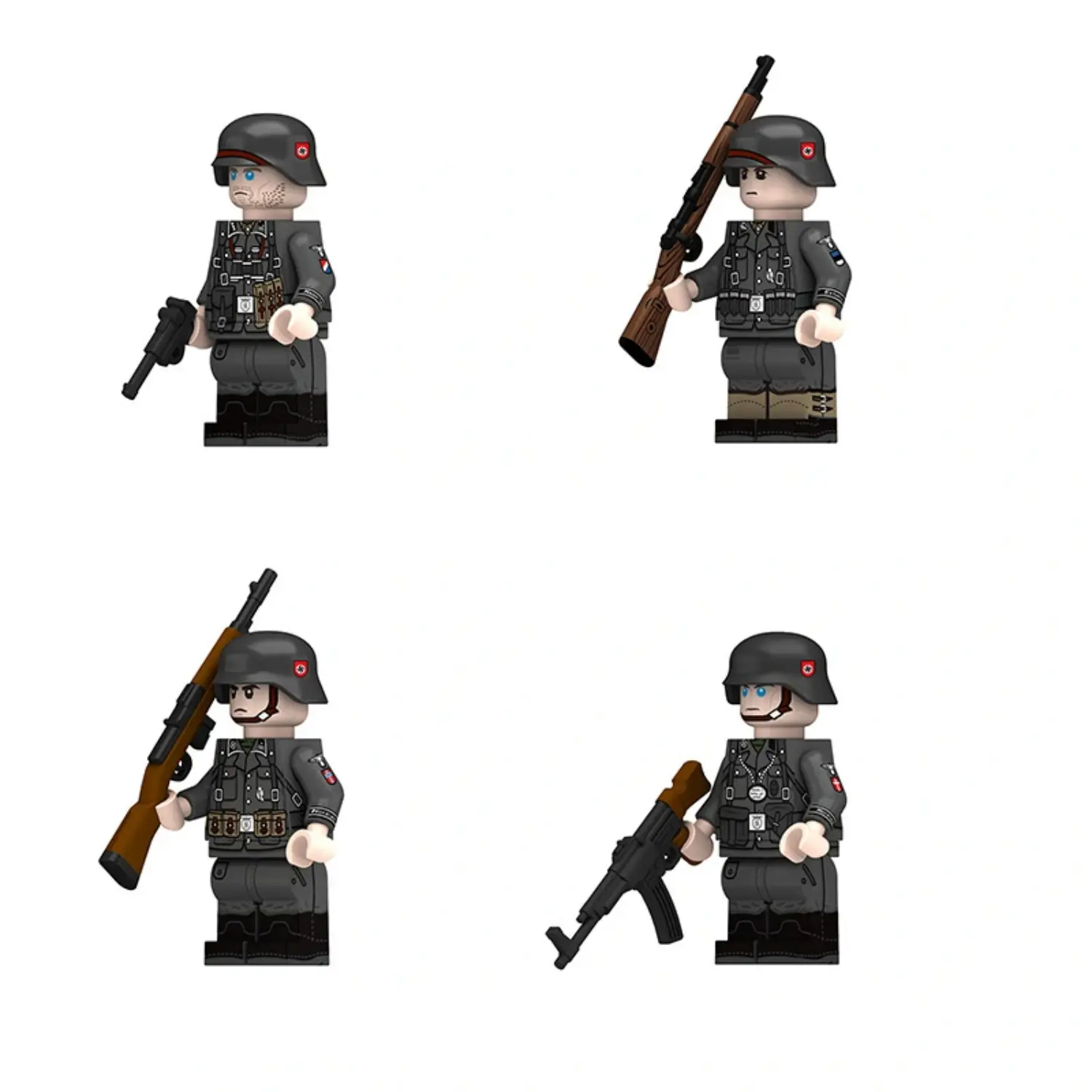
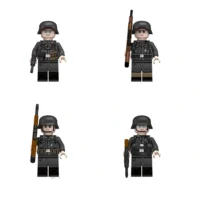
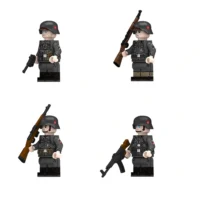
Reviews
There are no reviews yet.